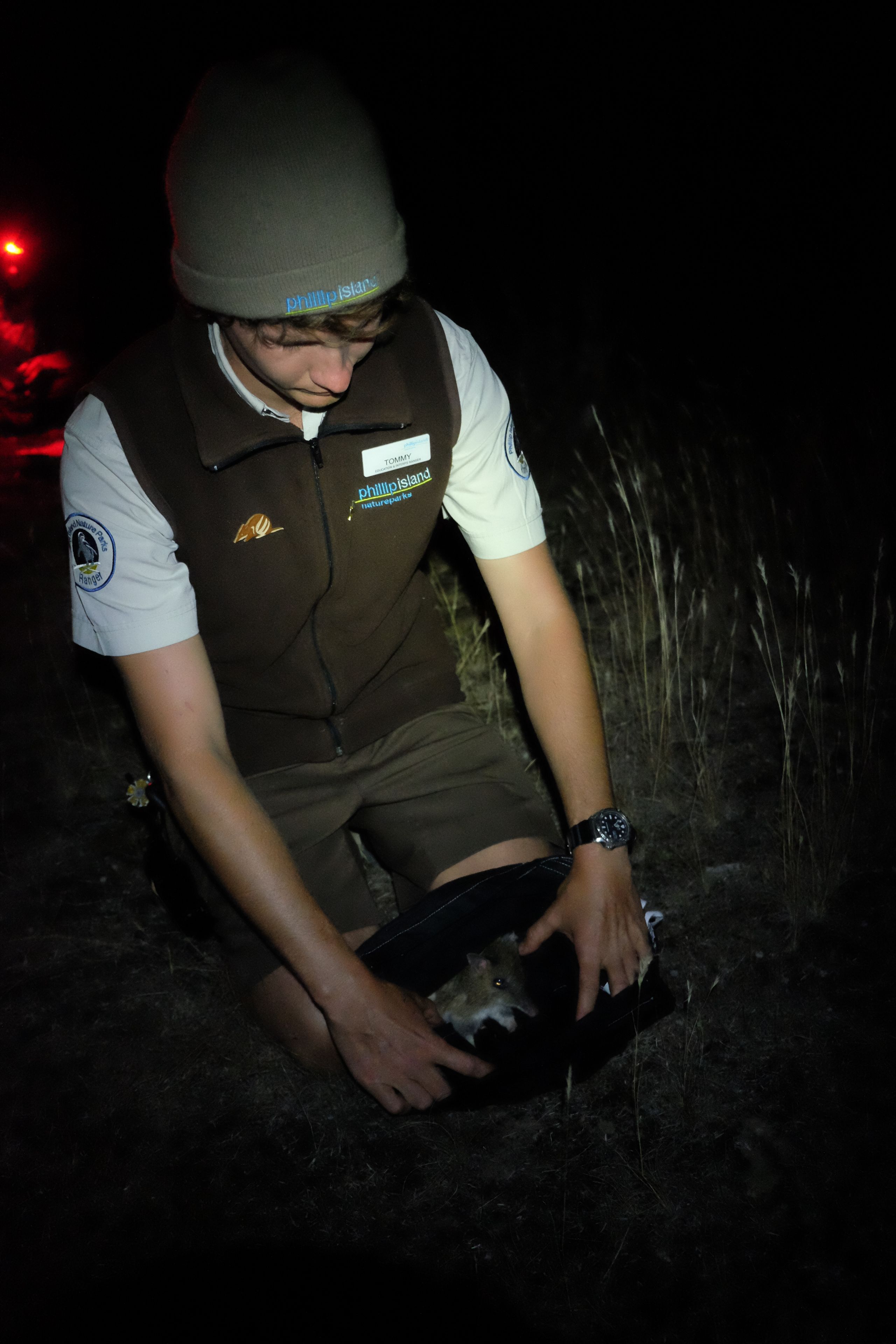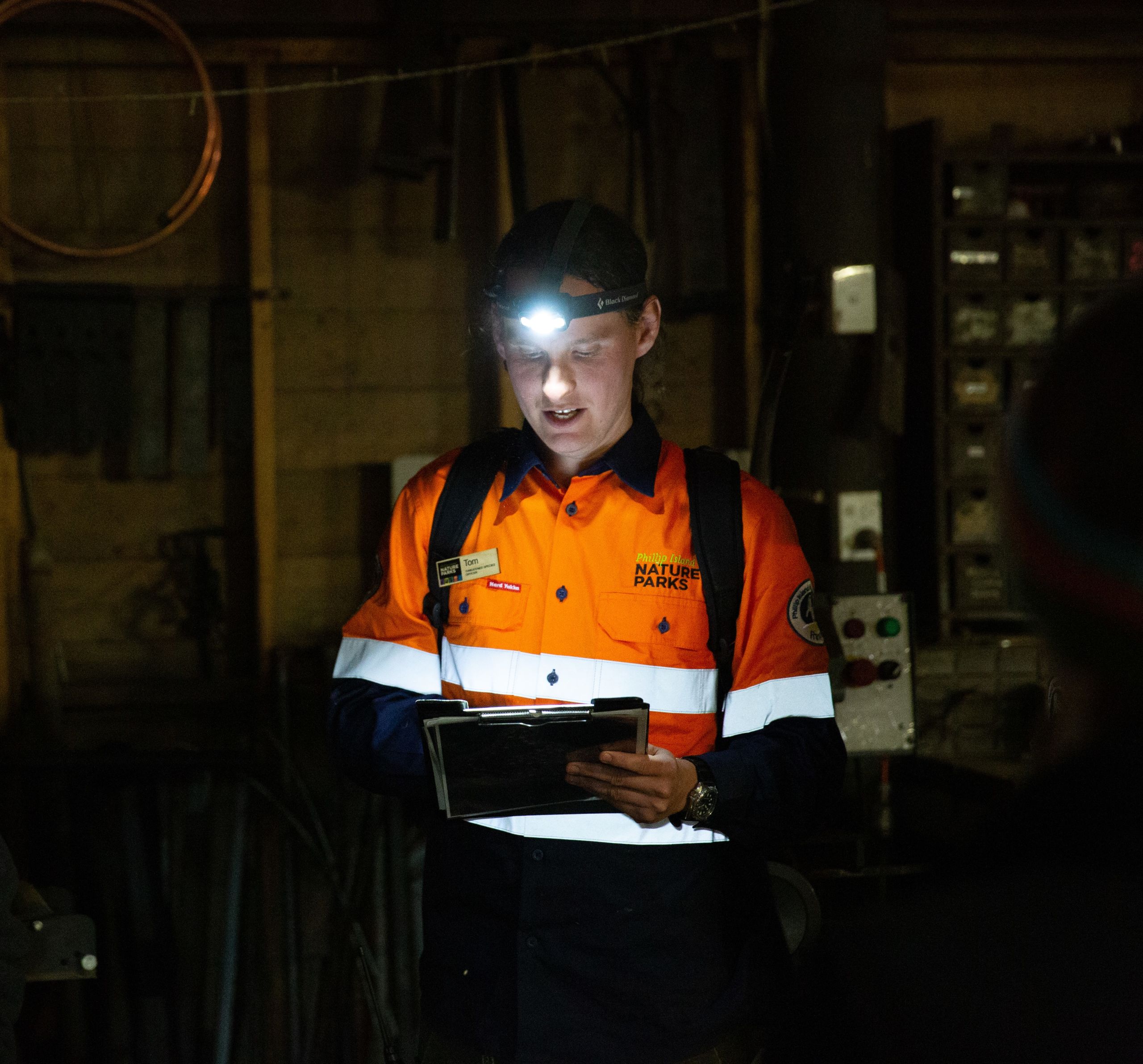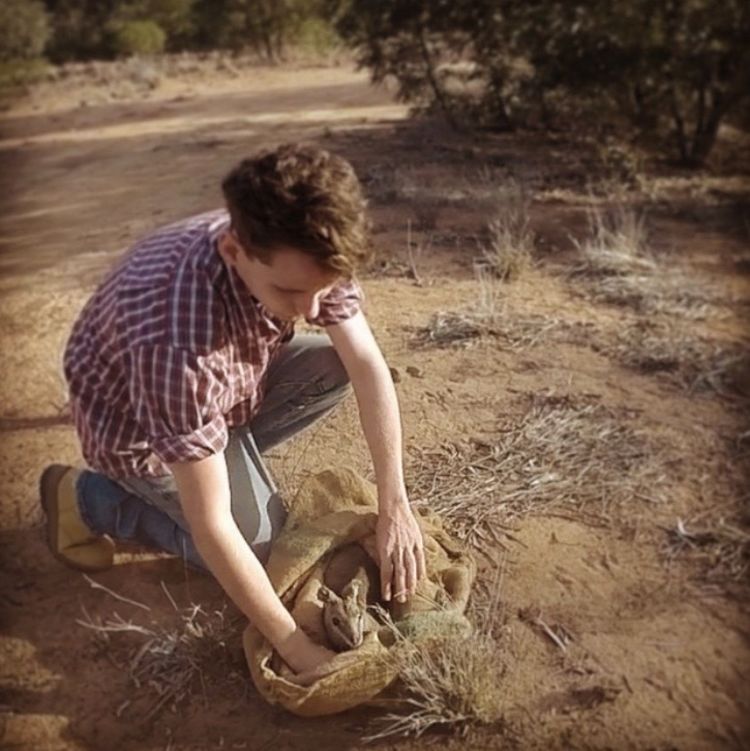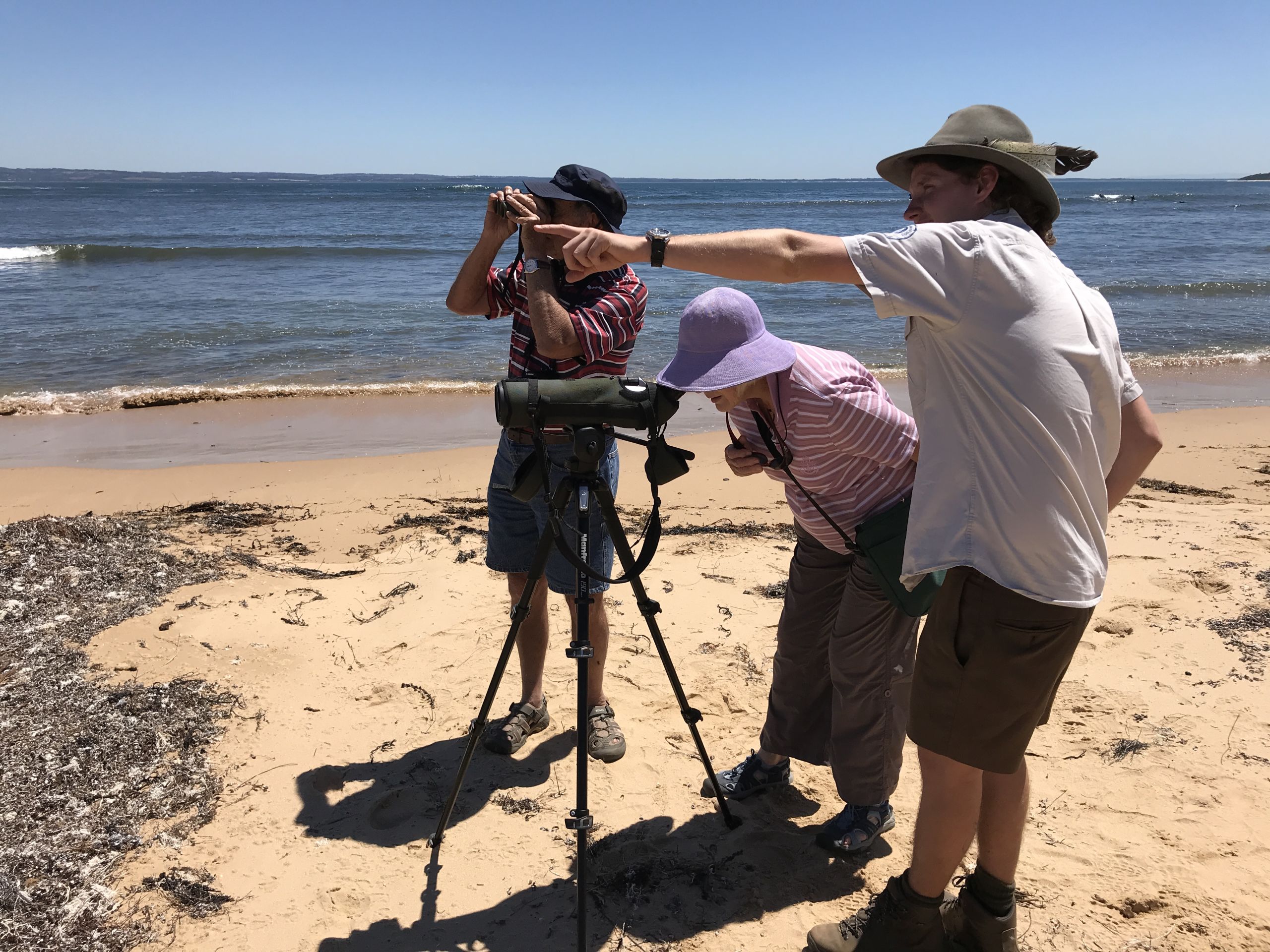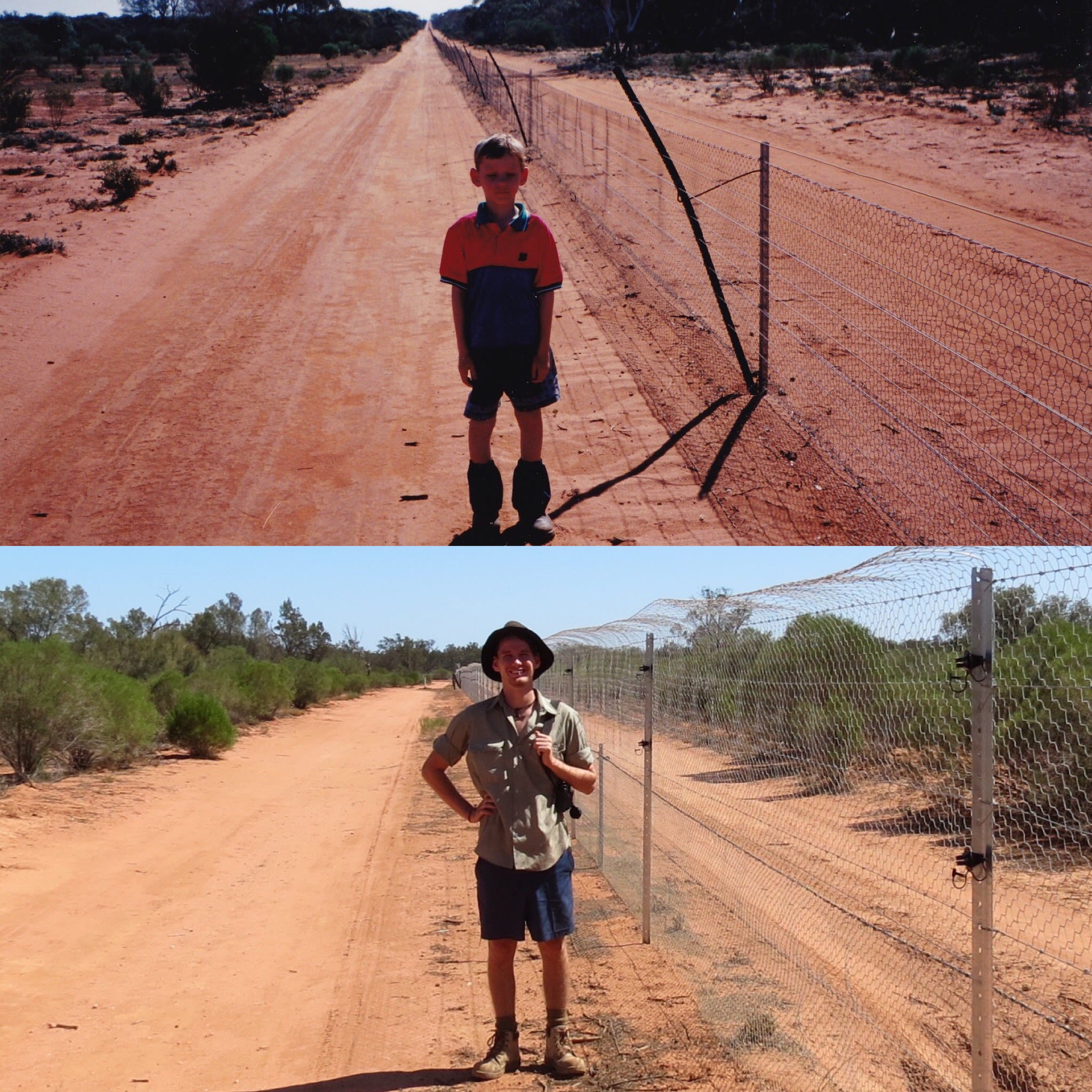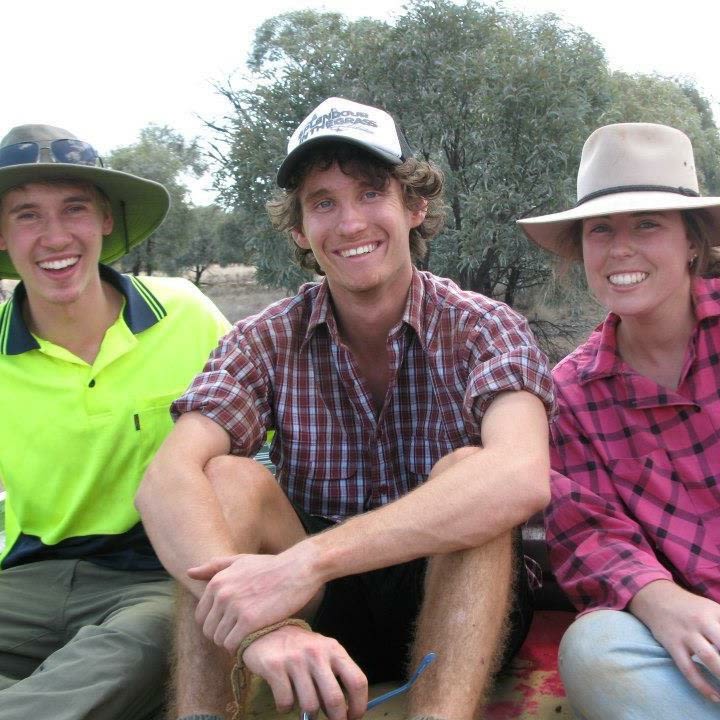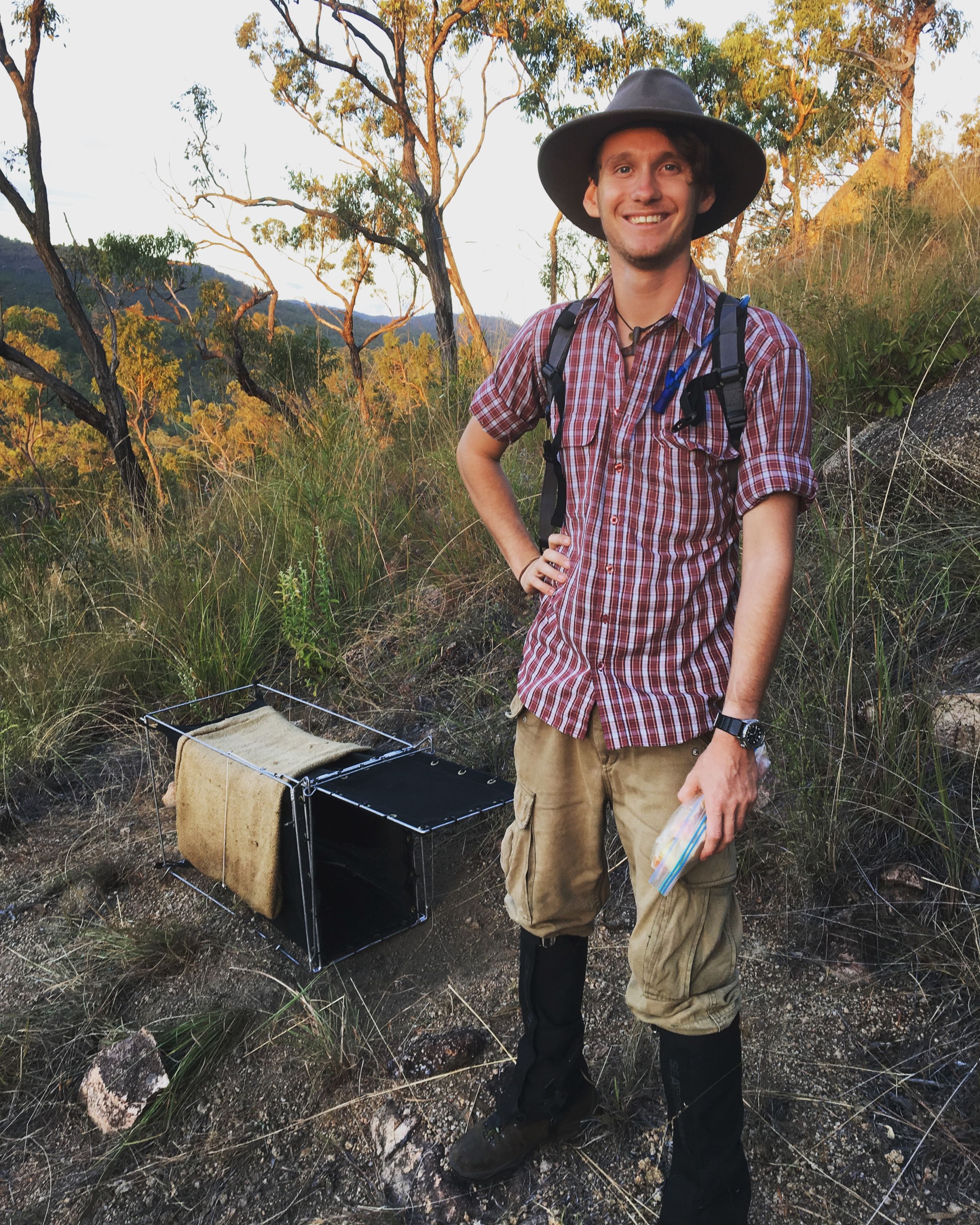Wildlife Warrior
Thomas Nixon helps create a brighter future for Australia’s threatened wildlife.
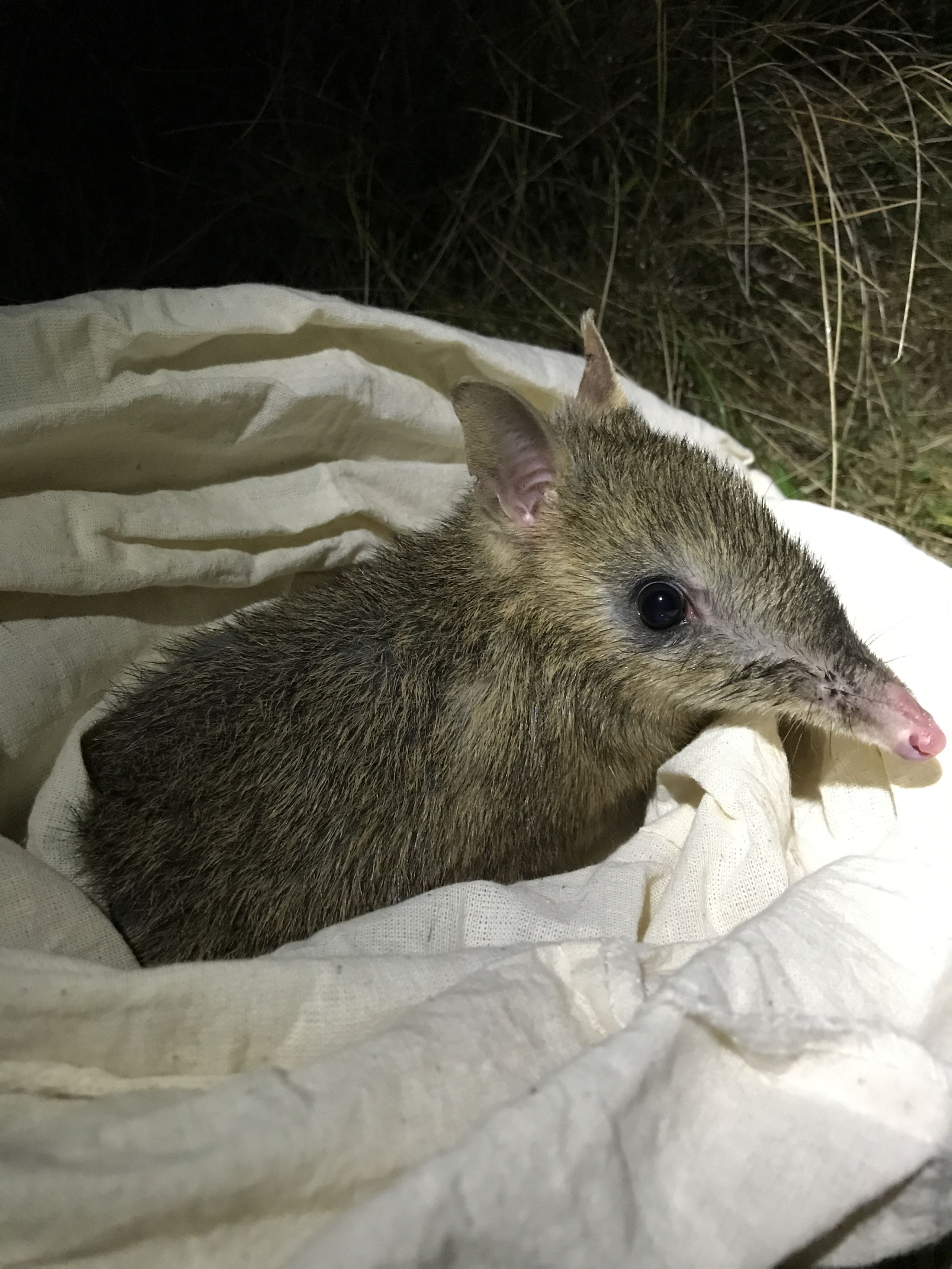
Thomas Nixon’s love of the great outdoors combined with his passion for protecting the environment was the perfect foundation for a rewarding career in conservation.
“I find working with our community to achieve real conservation benefits for Australian threatened species incredibly rewarding.”
He specialises in local wildlife conservation and has previously worked with small mammal species such as eastern barred bandicoots, bridled nailtail wallabies, mala, bilbies, northern hairy-nosed wombats, shaman's rock wallabies and yellow-footed rock wallabies and also birds such as hooded plovers, little penguins, short-tailed shearwaters and bush stone-curlews.
“I absolutely love the practical side of conservation as it gets me outdoors in the beautiful environments such as those on Phillip Island (Millowl).”
Thomas is currently the Threatened Species Officer for Phillip Island Nature Parks where he contributes scientific knowledge to environmental research and conservation programs on Phillip Island (also known as Millowl to the local Bunurong community).
"I am working to protect resident threatened species as well as building Phillip Island Nature Parks' status as a world renowned conservation organisation as we look towards potential re-introductions of locally extinct threatened species on Phillip Island (Millowl)."
What are your core responsibilities as a Threatened Species Officer?
I contribute towards research into wildlife and the environment and maintain the status of Phillip Island Nature Parks as an internationally recognised research organisation and of Phillip Island (Millowl) as a ‘conservation ark’ for threatened species.
I am responsible for coordinating the Threatened Species Program on Phillip Island (Millowl). This involves undertaking research and conservation actions for resident threatened species of flora and fauna on the island. One such species is the Eastern Barred Bandicoot that was introduced to the island in 2017 as part of the Recovery Plan for this critically endangered species. I coordinate the monitoring of this species on Phillip and Churchill Islands and assist in other translocations – such as the collection of 40 Eastern Barred Bandicoots from here for release onto French Island in October 2019.
The introduction of Eastern Barred Bandicoots to Phillip Island (Millowl) was made possible through our successful fox eradication program. With the removal of this key threat from the island we have a chance to play a lead role in the conservation of other threatened species. As well as monitoring resident threatened species, I am also preparing for future reintroductions of other threatened species to Phillip Island (Millowl) which involves preparing applications for government, working with community stakeholders and establishing best-practice release protocols for a variety of species.
"The practical and theoretical aspects from my Bachelor of Environmental Science degree at UQ has given me the skills required to be successful in this role."
What do you enjoy most about working in conservation?
I really enjoy the practical side of conservation as this gets me outdoors in the beautiful environments of Phillip Island (Millowl) and working with our community to achieve real conservation benefits for Australian threatened species. It is such a rewarding experience to discuss the opportunity we have; to bring previously lost species back to Phillip Island (Millowl); with members of the community who remember those species living here throughout their childhood.
How has studying at UQ prepared you for a career in conservation?
"During my time at UQ, I had the opportunity to learn from renowned conservation experts and be exposed to world-leading research projects, particularly in the fields of conservation and biological science."
I was lucky enough to volunteer with the Idalia Recovery Organisation of Students and took many trips to Idalia National Park assisting with fauna surveys, park maintenance and mapping. This volunteering experience facilitated by UQ was what really inspired me to continue with my studies into my Honours year and pursue a career in conservation.
I was also part of UQ’s Environmental Science Society where I had the opportunity to meet and learn from some amazing people with a shared passion for creating a sustainable, thriving environment now and into the future.
Why did you choose to study at UQ?
I grew up the Northern Rivers region of NSW, so UQ was relatively close for me to travel back and visit family. It was also recognised at my school as a fantastic institution, so when I was accepted into the Bachelor of Environmental Science degree, it was a no-brainer.
What advice do you have for future students?
Do it! UQ is a fantastic institution where your passion and knowledge can thrive and develop. Also, volunteer as much as possible! There is no substitute for real, on-the-ground experience in the field of conservation – and it’s a bunch of fun!
Thomas helps monitor and protect threatened species on Phillip Island (Millow) such as the Eastern Barred Bandicoot.
Thomas helps monitor and protect threatened species on Phillip Island (Millow) such as the Eastern Barred Bandicoot.
A key part of Thomas' role is conducting research to inform conservation strategies.
A key part of Thomas' role is conducting research to inform conservation strategies.
Thomas with a Bridled Nailtail Wallaby
Thomas with a Bridled Nailtail Wallaby
Thomas finds sharing his passion for the environment with the community incredibly rewarding.
Thomas finds sharing his passion for the environment with the community incredibly rewarding.
Thomas with a Bridled Nailtail Wallaby
Thomas with a Bridled Nailtail Wallaby
Thomas outside the fence of Scotia Wildlife Sanctuary as a child (top) and re-creating the same photo as an adult (bottom).
Thomas outside the fence of Scotia Wildlife Sanctuary as a child (top) and re-creating the same photo as an adult.
Thomas was a member of the Idalia Recovery Organisation of Students (IROOS) during his time at UQ.
Thomas was a member of the Idalia Recovery Organisation of Students (IROOS) during his time at UQ.
About Thomas Nixon
UQ qualifications
- Bachelor of Environmental Science (Ecology)
- Bachelor of Environmental Science (Honours)
Thomas was awarded First Class Honours for his honours year project on the conservation of the bridled nailtail wallaby at Idalia National Park.
Current role
- Threatened Species Officer at Phillip Island Nature Parks, Phillip Island (Millowl), Australia
- Assistant Environment Manager at Splendour in the Grass, Byron Bay, Australia
Previous professional experience
- Education Ranger at Phillip Island Nature Parks , Phillip Island (Millowl), Australia
- Penguin Parade Ranger at Phillip Island Nature Parks , Phillip Island (Millowl), Australia
- Tour Guide at Longitude 131, Uluru-Kata Tjuta National Park, Australia
- Green Army Participant at Conservation Volunteers Australia
Volunteer experience
- Volunteer Handler and Research Assistant at Phillip Island Nature Parks , Phillip Island (Millowl), Australia
- Volunteer Research Assistant at Department of Environment and Heritage Protection
- Volunteering with Australian Wildlife Conservancy to assist with population and health assessment on Mala at Scotia Sanctuary.
- As a UQ student, volunteered with the Idalia Recovery Organisation of Students to assist rangers at Idalia National Park with fauna surveys and conservation activities such as predator exclusion fencing.
- Volunteering in the Ecological Assessment Unit of the Queensland Parks and Wildlife Service
Where will science take you?
View other profiles to explore the pathways that many of UQ’s science graduates have taken in fields such as agriculture, biotechnology, business, food science, marine and environmental sciences, research, veterinary science and more.
Visit the Future Students website to learn more about UQ's Science and Mathematics programs.

